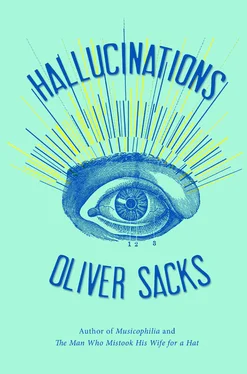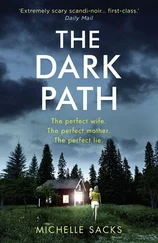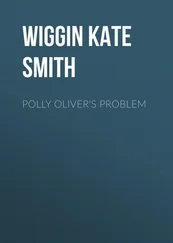He wonders, too, whether his hallucinations might progress. For about a year before he began to see musical notation, Arthur saw something much simpler: a checkerboard pattern. Will his musical notation be followed by even more complex hallucinations, such as people, faces, or landscapes, as his eyesight declines?
There is clearly a wide array, a whole spectrum, of visual disturbances which can occur when vision is lost or compromised, and originally the term “Charles Bonnet syndrome” was reserved for those whose hallucinations were related to eye disease or other ocular problems. But an essentially similar array of disturbances can also occur when the damage lies not in the eye itself but higher up in the visual system, especially the cortical areas involved in visual perception — the occipital lobes and their projections into the temporal and parietal lobes of the brain — as seems to be the case with Zelda.
Zelda was a historian who came to see me in 2008. She told me how her world of strange visual phenomena had started at a theater six years earlier, when the beige curtain in front of the stage suddenly seemed to be covered in red roses — the roses were three-dimensional, thrusting out of the curtain. When she closed her eyes, she still saw the roses. This hallucination lasted for a few minutes and then vanished. She was perplexed and frightened by this, and she went to consult her ophthalmologist, but he found no impairment of vision and no pathological changes in either eye. She saw her internist and cardiologist, but they could not provide any plausible explanation for this episode — or the countless episodes that followed. Finally she had a PET scan of her brain, which showed reduced blood flow in her occipital and parietal lobes, presumably the cause, or at least a possible cause, of her hallucinations.
Zelda has both simple and complex visual hallucinations. The simple ones may appear when she is reading or writing or watching television. One of her physicians asked her to keep a journal of her visions over a three-week period, and in it, she recorded, “As I write this page, it is becoming more and more covered by a pale green and pink lattice.… The garage walls, covered in white cinderblock, continually mutate … coming to resemble bricks, or clapboard, or being covered with damask, or flowers of different colors.… On the upper part of the walls in the hallway, shapes of animals. They were formed by blue dots.”
More complex hallucinations — battlements, bridges, viaducts, apartment houses — are especially common when she is being driven in a car (she gave up driving herself after her initial attack, six years ago). Once when she and her husband were driving along a snowy road, she was startled to see brilliant green bushes, their leaves glittering with icicles, to either side of the road. Another day, she saw a rather shocking sight:
As we drove away from the beauty parlor, I saw what looked like a teenage boy on the front hood of our car, leaning on his arms with his feet up in the air. He stayed there for about five minutes. Even when we turned he stayed on the hood of the car. As we pulled into the restaurant parking lot, he ascended into the air, up against the building, and stayed there until I got out of the car.
At another point, she “saw” one of her great-granddaughters, who rose up, moved to the ceiling, and disappeared. She saw three “witchlike” figures, motionless and hideous, with huge hooked noses, protruding chins, and glaring eyes — these also vanished after a few seconds. Zelda said she had no idea that she had so many hallucinations until she starting keeping a journal; many of them, she thought, would otherwise have been forgotten.
She also spoke of many strange visual experiences which were not quite hallucinations in the sense of being totally invented or generated but seemed to be persistences, repetitions, distortions, or elaborations of visual perceptions. (Charles Lullin had a number of such perceptual disorders, and they are not uncommon in people with CBS.) Some of these were relatively simple; thus, when she looked at me on one occasion, my beard seemed to spread until it covered my entire face and head, and then resumed its proper appearance. Occasionally, looking in a mirror, she might see her own hair rising a foot above her head and have to check with her hand to make sure it was in its usual place.
Sometimes her perceptual changes were more disturbing, as when she encountered her mail carrier in the lobby of her apartment building: “As I looked at her, her nose grew until it was a grotesque figure on her face. After a few minutes, as we stood talking, her face came back to normal.”
Zelda would often see objects duplicated or multiplied, and this might create odd difficulties. “Making dinner and eating was quite difficult,” she said. “I kept seeing several of each piece of food when they didn’t exist. This lasted most of dinner.” 9 9 I was reminded, when she said this, of a case I had heard of in which as a patient ate cherries from a bowl, they were replaced by hallucinatory cherries, a seemingly endless cornucopia of cherries, until, suddenly, the bowl was totally empty. And of another case, of a man with CBS who was picking blackberries. He picked every one he could see; then, to his delight, he saw four more he had missed — but these turned out to be hallucinations.
Visual multiplication like this — polyopia — can take even more dramatic form. Once, in a restaurant, Zelda observed a man in a striped shirt paying at the cash register. As she watched, he split into six or seven identical copies of himself, all wearing striped shirts, all making the same gestures — then concertinaed back into a single person. At other times, her polyopia can be quite frightening or dangerous, as when, sitting in the passenger seat of her car, she saw the road ahead of her split into four identical roads. The car seemed to her to proceed up all four roads simultaneously. 10 10 Something about visual movement or “optic flow” seems to be especially provocative of visual hallucinations in people with CBS or other disorders. I met one elderly psychiatrist with macular degeneration who had experienced only a single episode of CBS hallucinations: he was being driven in a car and began to see, on the edges of the parkway, elaborate eighteenth-century gardens which reminded him of Versailles. He enjoyed the experience and found it much more interesting than the ordinary view of the roadside. Ivy L., who also has macular degeneration, wrote: As a passenger in cars, I began riding with my eyes closed. Now I often “see” a small, moving travel scene in front of me when my eyes are shut. I “see” open roads and sky, houses, and gardens. I do not “see” any people or vehicles. The scene constantly changes, showing unidentifiable houses in great detail sliding by when the car is in motion. These hallucinations never appear except when I am in a moving car. (Mrs. L. also reported text hallucinations as part of her CBS, “brief periods when I would ‘see’ handwriting in huge letters across a large white wall, or the income tax figures imprinted on the drapes. These lasted several years, at intervals.”)
Seeing moving pictures even on television may lead to hallucinatory perseverations. Once, watching a television program that showed people descending from a plane, Zelda began to hallucinate minute replicas of the figures, which continued their descent off the screen and down the wooden cabinet of the television console.
Zelda has dozens of these hallucinations or misperceptions every day, and has had them, almost nonstop, for the past six years. And yet she has managed to maintain a very full life, both domestically and professionally — keeping house, entertaining friends, going out with her husband, and completing a new book.
Читать дальше












